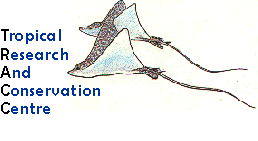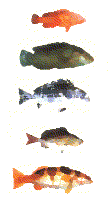|
|
|
|
Cyanide and the live fish trade
|
 |
|
|
|
|
Fishing with cyanide for the live reef fish trade (LFT) is destroying coral reefs across Southeast Asia and the Indo pacific. The LFT exists to supply live, usually large fish, to gourmet markets in Hong Kong, Singapore and other Asian cities.
|
| CYANIDE FISHING TECHNIQUES |
| The fishery consists of two types of operations,
small-motorised boats which fish on an opportunistic basis in nearshore waters for lobster, sea cucumber and fish, and larger live-aboard boats, which travel over very large distances. Most of these boats are fitted with hookah air compressors allowing diving to greater depths for cyanide fishing or increased exploitation of sea cucumbers living at greater depths.
|
|
|
Boats which supply the live fish trade are equipped with a car tyre air compressor and two long, reinforced hoses for air delivery.
Cyanide fishing companies often supply cyanide fishermen with air compressors for their diving but often neglect to give them instruction in their use. As a result, death or paralysis due to the bends has become widespread. |
THE HOOKAH TUBE USED BY CYANIDE FISHERS TO BREATHE UNDERWATER. |
The divers use no regulators but allow the air to flow continuously from the open hose into their mouths. There are usually 4-6 divers per boat with rotating shifts of two divers underwater searching the reef throughout the day. Dives usually last 40 minutes to one hour, at depths of up to 50 m, as the divers search for fish. |
| A suitable live reef fish is chased into a hole in the reef and then all entrances
are sprayed with cyanide. In most instances observed, the fish made several attempts to escape, becoming more drugged and
disoriented with each application of cyanide. When finally captured, the fish is enclosed in a net to recover and its swim bladder is punctured to allow the gas to expand as it is brought to the surface.
DRUGGED WITH CYANIDE, THE FISH IS EASILY CAPTURED IN A NET. |
|
|
After capture, the fishers store their catches in aquaculture style fish cages until the fish can be sold either to a live fish transport boat or less frequently to an airfreight shipper.
In Sabah, the fish are stored in cages in Kudat and Kota Kinabalu bays until they are exported by
live fish boats to Singapore or Hong Kong.
The live fish transport boats have large water filled holds to store the fish as they travel between reef areas and the markets of Hong Kong or Singapore. In both Indonesia and Sabah, the LFT transport boat owners generally employ the poorest groups of local fishermen to catch fish for the live fish trade. |
| During one of our expeditions, fishers were observed using cyanide on two occasions although we could smell the prussic acid on several other occasions. Near Pulau Mabul, a large marbled grouper was squirted with cyanide repeatedly and chased from coral head to coral head for over one hour. At one point, the disoriented fish was floating belly up on the surface next to the fishing boat. Before the two fishers could get into the boat to assist the two small children who were unable to maneouvre the fish into the dip net, the grouper recovered sufficiently to head again for the patch reefs below. Eventually, the grouper escaped into a large coral patch which obviously had several caves or passages since even using multiple doses of cyanide, the fishers did not again succeed in getting the fish out into the open. |
|CYANIDE FISHING| |REGIONAL THREAT| |THREATENED SPECIES| |MARKET FORCES| |SOCIAL AND ENVIRONMENTAL COSTS|

![]()
SEE ALSO:
|POPULATION DECLINES IN LARGE FISH STOCKS| |GROUPER SIZES IN AREAS WITH AND WITHOUT FISHING| |BLAST FISHING|
FISH POPULATIONS AROUND SABAH
 |
SMALL GROUPERS |
| HUMPHEAD WRASSE | |
| SWEETLIPS | |
| RED + BLACK SNAPPERS | |
| CORAL TROUT |